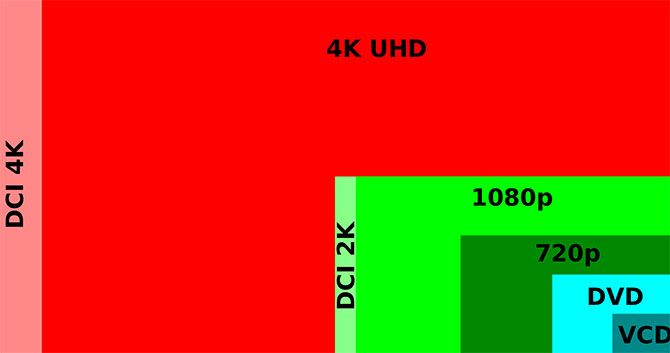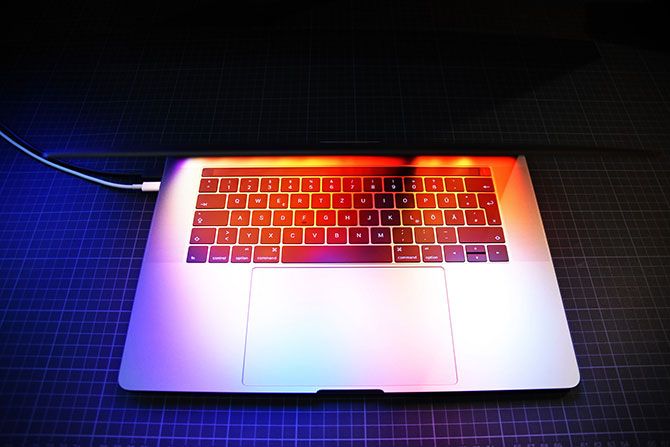With 8K video right around the corner, it's strange to think that loads of people are still resisting shooting in 4K. They're put off by concerns about large file sizes and slow editing, and the videos taking ages to upload.
However, if you haven't made the leap to shooting in 4K yet, it really is time to do so. The old excuses no longer make any sense. Start shooting in 4K now, and you'll thank yourself later. And here are the reasons why...
1. 4K Gives You More Options
Just because you're shooting in 4K, that doesn't mean you have to work in 4K. For many projects, 1080p is good enough. The benefit of shooting in 4K is a quadrupled resolution, allowing you to zoom in cleanly since you have a much better source video to work with.
This is perfect for cutting to close-ups, effectively eliminating jump-cuts from your finished product entirely. This effect can commonly be seen in single-camera interviews, where the perspective shifts between a wide full-body shot and a close-up shot of the interviewee talking.
Pull it off well and it can be used for dramatic effect to add emphasis and connect better with the subject.
You could take it a step further and apply a "Ken Burns" pan-and-zoom effect to a still shot. Imagine being able to crop or add movement to any shot you want, without losing image quality in the process. There's no chance of you accidentally wobbling the camera, either.
You can even grab fairly high-resolution still images from your footage. They won't look amazing, but they're good enough to use on the web, as YouTube thumbnails, or even Instagram posts.
2. 4K Capture Looks Better
Even if your end product will be presented in 1080p, shooting 4K will deliver a higher quality downsampled image. Capturing four times the amount of information you need won't produce an image that's four times better looking, but the end result will be noticeably sharper.
You'll also reduce the chance of color banding, since most cameras record 4K at a higher bitrate. That means more color detail is captured, which will vastly improve gradual changes, like deep blue skies or other solid colors.
Sometimes the camera makes all the difference. Modern mirrorless, digital SLR, and premium compact cameras like the excellent Sony RX100 VII shoot 4K using larger sensors, effectively downsampling a 6K or 8K image to 4K. The Panasonic GH5 even does 6K video and 4K video at a bitrate of 400 megabits-per-second.
3. You Can Stabilize Your Footage in Post
Whatever you do with your footage, it'll probably look better if you held the camera fairly still when you shot it. Sometimes this isn't possible, and three-axis stabilizers like the Zhiyun Crane 2 can be pretty pricey. This is where software stabilization comes in; a feature that's built into most modern editors.
Most generally recommend avoiding software stabilization since it works by stretching the image. For 1080p productions, 4K source material will result in software-stabilized footage with no loss in image quality whatsoever. 2K (1440p), the 720p of the 4K world, is another great compromise in order to take advantage of software stabilization.
4. You'll Thank Yourself in the Future
You know how 720p videos look on a 1080p screen? Do you remember what every single Wii U game looked like? Well that's what your 1080p videos look on a large 4K panel. They have to upscale the HD video to fit the 4K screen. Some TVs are better at it than others, and the larger the display the worse it tends to look.
And the situation is not going to improve. In five years or so, when you've bought your new 8K TV with 16 times the resolution of HD, those 1080p videos are not going to look good at all.
You'll regret your decision to have sacrificed image quality for storage space, especially if some of your movies contain treasured memories.
5. Storage Is Cheap
Another reason you may be resisting jumping to 4K is increased storage demands. If you're shooting primarily on your smartphone, the answer is simple: don't store videos on your phone long-term. They're probably the biggest hoarder of free space in your pocket, so move them to your computer and store them safely elsewhere.
Portable hard drives like the WD Passport and Seagate Backup Plus are also cheap, and it will probably take you a while to fill up a couple of terabytes. If you combine a few cheap external drives with the best cheap cloud storage services, you'll never have to worry about storage space again.
If you're really serious about video---and you want to eventually make money or more involved productions---invest in a proper storage device like a network drive with a RAID array with regular online backups.
6. You Can Work Around Hardware Limitations
A lack of editing grunt is probably the most common reason to continue shooting in 1080p. Assuming you've upgraded your desktop or laptop in the last few years this shouldn't actually be as big a problem as it once was.
Your choice of video editor can play a big part. Many Mac users prefer Apple's own tools like iMovie and Final Cut Pro since they have been designed by Apple, for Apple hardware. They are generally better optimized for the hardware than their Windows counterparts.
Windows users will have to conduct a little trial and error of the best video editors for their particular setup.
There's also the small issue of budget. If you're lucky enough to be using a professional editor like Adobe Premiere Pro as part of the Creative Cloud suite, you can make use of a feature called proxy editing to create lower-resolution versions of your 4K files for editing.
This will allow you to edit huge resolution files with relative ease, and Premiere will replace your files with the 4K source files for the final render.
Even older versions of Premiere Pro allow you to transcode to one-quarter or one-eighth quality on the fly, which can make a huge difference to performance. If you're stuck editing 4K footage on an underpowered machine, you can optimize performance by:
- Restarting your computer, then opening only your video editor.
- Disconnecting external displays, since driving another monitor will tax your GPU.
- Copying your files to your fastest local drive, ideally an SSD if you have one.
- Connecting to power if you're using a laptop for editing.
When you do finally take the plunge on a new machine that eats 4K for breakfast, you'll be glad you have some footage to play around with.
Make the Switch Already for 4K's Sake!
If it feels like 4K has been around for ages, that's because it has. The benefits of a 1080p image were clear as day to an audience raised on VHS tapes and standard definition broadcasts, but 4K doesn't seem like quite such a captivating jump.
Regardless, don't resist the change. Buy a few spare hard drives and embrace ultra high-definition (the differences between 4K and ultra HD). In 10 years' time we guarantee you'll be glad you did.
Once you've made the switch you can set about improving your videos in other ways. Check out our guide detailing how to make your home videos look more professional for some great tips to get started.




